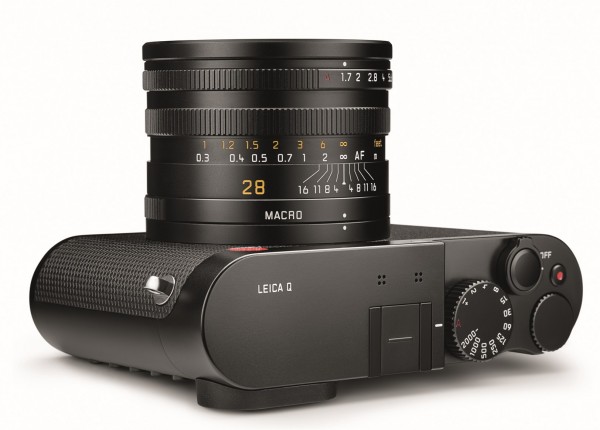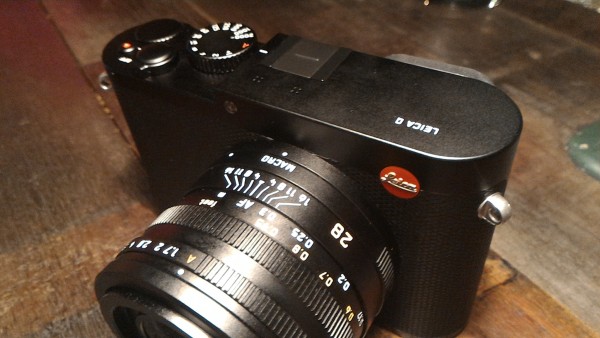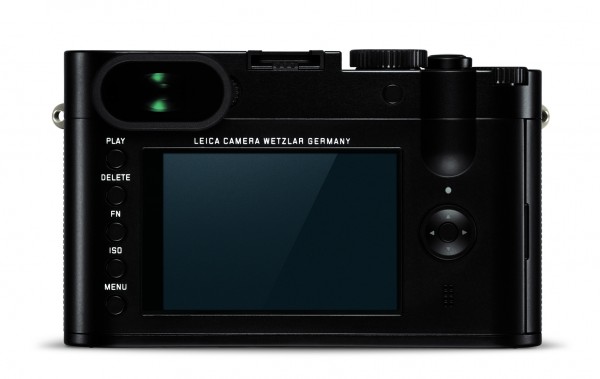Long associated with well built, hand-crafted cameras and outstanding optics from their M series rangefinder series, Leica has become the Ferrari of the photography world.
Leica fans appreciate the way Leica optics render an image and are willing to pay good money it. Inevitably, the asking price also means its M cameras are out of reach for most other users.
Leica has now introduced a “lite” version of its M rangefinder camera. Going for S$5,990, the Q is cheaper than the M that can cost close to S$10,000 in Singapore for the body alone.
The new camera is aimed attracting more Leica fans, especially those who want the Leica experience in a lightweight package. Though it uses a compact mirrorless system, the Q sports a 28mm fixed lens.
It is also clearly lighter than the M, weighing just 640g thanks to the use of magnesium and aluminium. The M weighs 680g without a lens.
Although the Q doesn’t come with an optical viewfinder, its electronic viewfinder is up to the job, reacting quickly when the camera moves to another subject. It’s also bright and clear.
The Q’s full-frame sensor shoots at a maximum of 24 megapixels, which is more than sufficient for most users, even if they are printing large photos.
Perhaps what’s more exciting is the Q’s control mechanism, which follows the tried and tested layout of old film rangefinder cameras. It’s simple and intuitive.
The controls also give the camera an old-school feel, which adds to its appeal. Like the rival Fujifilm X100, the shutter speed and exposure compensation are controlled by two dials on the Q’s top plate and the shutter is changed via the aperture ring near the front of the lens.
Putting both shutter and aperture to “A” or automatic mode means the camera is placed in Program mode. This is by far the easiest way to set up a camera.
Unlike the M, the Q camera is able to auto-focus, which is a godsend for users who may struggle to focus using the electronic viewfinder.
If you go the manual route, however, what’s helpful is the Focus Peaking mechanism. First seen in Sony’s mirrorless cameras, it helps you see the areas in focus more easily, especially on an electronic viewfinder.
Folks who love the Leica M feel will be happy to know that the manual focusing on the Q is close to its more expensive sibling. It even has a focus lever similar to that of the Summilux lens of the M series.

There are some innovations and improvements too. For active social media users, the Q can be connected to an iPhone or iPad to share photos easily. Android devices are expected to be supported later, though the Leica folks haven’t set a firm date.
What’s also handy is Q’s Summilux 28mm f1.7 lens, which can quickly switch to macro mode for close distance shots. Just turn a lens barrel ring instead of poking a button at the back.
To some, the Q’s fixed focal length at 28mm can be a bit too wide. I prefer to shoot at 35mm for environmental portraiture shots. And street photographers adore the 50mm focal length.
Fortunately, the Q does allow you to shoot at longer focal lengths of 35mm and 50mm by showing the crop lines in the viewfinder and the rear screen, thus ensuring accuracy in composition.
The downside of this arrangement is that the picture resolution will be reduced to around 8 megapixels when shooting at 50mm focal length.
Fortunately, the Q saves a full-sized 24-megapixel DNG RAW file along with the cropped image so any changes to the composition can still be done during post processing.
In terms of image quality, the Summilux lens has to meet a pretty high expectation from potential buyers. Leica has specifically designed the lens for the 24-meg CMOS sensor akin to Fujifilm’s approach with their X100.
The general verdict of the images from this camera? It exhibits the characteristics of the M series Summilux lens with nice creamy, rounded bokehs and natural sharpness.
However, with a few quick shots I took during a launch event in Singapore this week, I also observed colour banding especially in the shadow and dark areas of the images.
Plus, the yellow colour tinge associated with the dimly-lit bar environment could have been more evident. This can be corrected during post editing stage, to be fair.
More tests are needed to see if this is due to a bad setting in the camera or the result of the in-camera JPEG conversion from DNG RAW files.


Generally, the Q feels good in the hands. It has an indention just behind the mode dial to accommodate the thumb, ensuring a good grip even when just using your right hand.
The buttons may be small but at least they are responsive and don’t get in the way. The camera doesn’t hunt a lot even when in a dark environment such as a bar lit only by table lamps.
Switching to manual focus is also a breeze and the camera will automatically zoom inside the viewfinder with focus peaking to ensure sharpness. However, the Q does take a little longer than the M when reviewing the photos.
So, yes, Leica is on to something here. The whole experience with the Q reminds me of the M but without its weight and price.
The new camera also shows that Leica is starting to include features that people expect of a modern digital camera. Perhaps it has been egged on by the success of Sony’s A7 and RX1 and Fujifilm’s X100.
I welcome Wi-Fi connectivity for sharing photos and autofocusing to capture those quick moments which would otherwise be lost if you had to use the older M’s manual focus.
The ergonomics are flawless, as usual from the German camera maker. What I’d like to test more is the quality of the images, when I get my hands on the camera again for a longer tryout.
CORRECTIONS
16/06/2015 12:40pm: An earlier version of this article listed the lens used on the Leica camera as a Summicron. This is incorrect. It should be Summilux, as reflected in the current version.
20/06/2015 8.30am: The CMOS sensor in the Leica Q was said to offer 28 megapixels in an earlier version of the article. It has been corrected to say 24 megapixels.
We are sorry for the errors.








